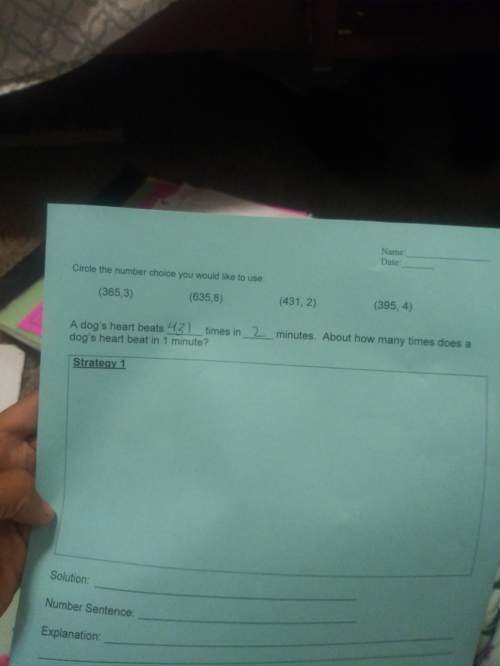
While visiting the amusement park, Sarah and Sam choose to ride the bumper cars while their instructor records video of their collisions. Back in the classroom, the students analyze a head-on collision between Sarah and Sam’s two cars. The velocity of each car after the collision is equal to the velocity of the other car before the collision (i. e., the cars switch velocities).
What can the students infer about the masses of the bumper cars?
A) Their masses are equal because both momentum and kinetic energy are conserved.
B) Their masses are unequal because both momentum and kinetic energy are conserved.
C) Their masses are unequal because neither momentum nor kinetic energy is conserved.
D) Their masses are unequal because neither momentum nor kinetic energy is conserved.

Answers: 3


Another question on Physics

Physics, 22.06.2019 05:00
Which statements describe the movement of ocean currents around the globe? check all that apply. strong winds force warm water to sink to the ocean floor. the coriolis effect causes warm and cold water to mix. cool dense water sinks to the ocean floor. warm water replaces cool surface water. wind blowing parallel to the shore causes upwelling of cool water.
Answers: 1

Physics, 22.06.2019 05:30
Iwill give 30 points to whoever answers ! what is the formula for actual mechanical advantage and ideal mechanical advantage?
Answers: 1

Physics, 22.06.2019 15:30
Two point charges are separated by a certain distance. how does the strength of the electric field produced by the first charge, at the position of the second charge, change if the second charge is doubled? a. the field does not change b. the field strength decreases by half. c. the field strength doubles d. the field strength quadruples
Answers: 1

Physics, 22.06.2019 21:20
People with normal vision cannot focus their eyes underwater if they aren't wearing a face mask or goggles and there is water in contact with their eyes. in a simplified model of the human eye, the aqueous and vitreous humors and the lens all have a refractive index of 1.40, and all the refraction occurs at the cornea, whose vertex is 2.60 cm from the retina.with the simplified model of the eye, what corrective lens (specified by focal length as measured in air) would be needed to enable a person underwater to focus an infinitely distant object? (be careful-the focal length of a lens underwater is not the same as in air! assume that the corrective lens has a refractive index of 1.62 and that the lens is used in eyeglasses, not goggles, so there is water on both sides of the lens. assume that the eyeglasses are 2.05cm in front of the eye.)
Answers: 3
You know the right answer?
While visiting the amusement park, Sarah and Sam choose to ride the bumper cars while their instruct...
Questions

History, 14.10.2019 14:00




Health, 14.10.2019 14:00



Mathematics, 14.10.2019 14:00

Social Studies, 14.10.2019 14:00

Biology, 14.10.2019 14:00





Chemistry, 14.10.2019 14:00


English, 14.10.2019 14:00

History, 14.10.2019 14:00





